Mon River Rail-Trail System (West Virginia)
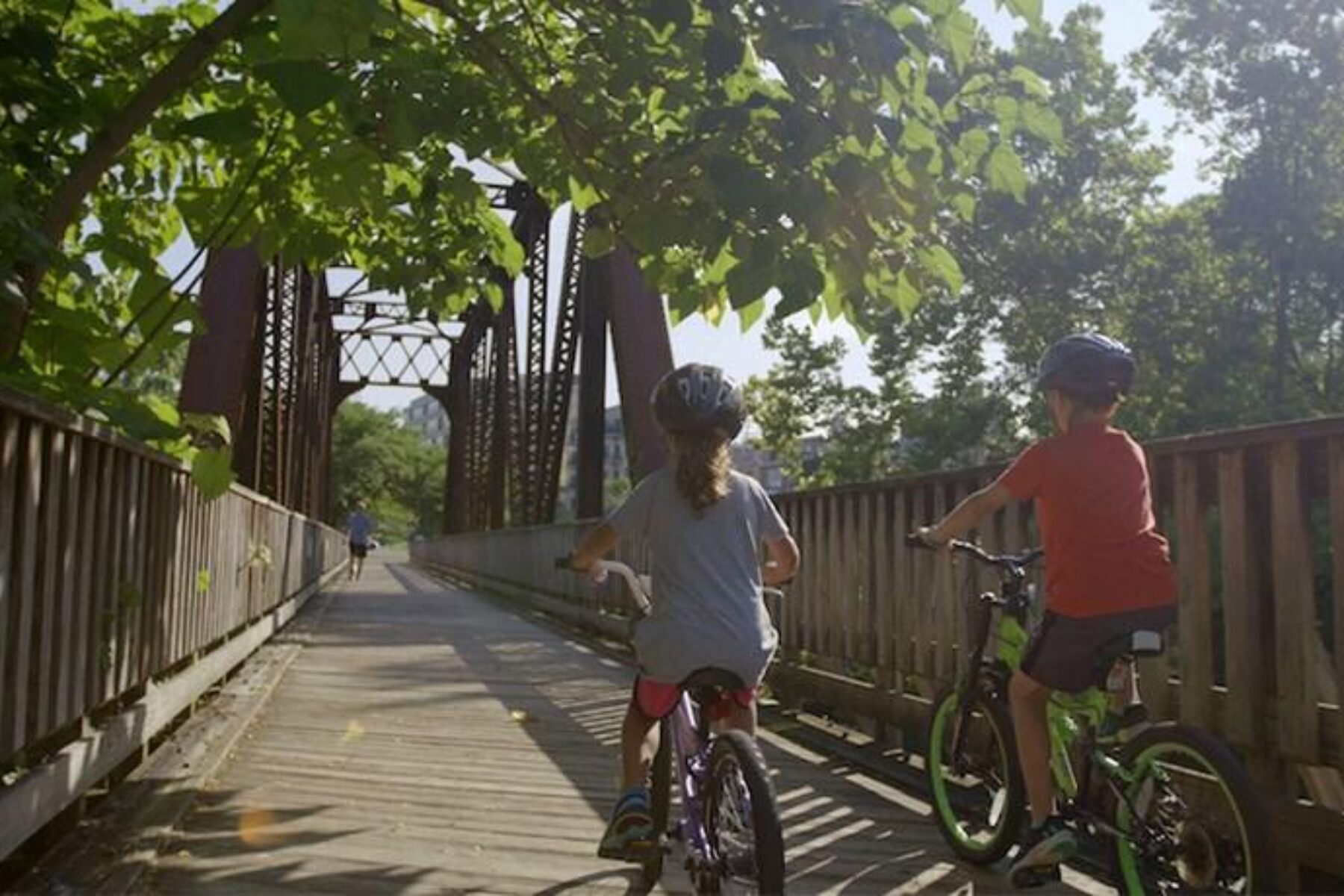
Trail of the Month: September 2020
“This trail is the best thing that ever happened to Morgantown.”
—Jenny Selin, Morgantown city councilmember
Tucked into the central Appalachian Mountains, a locally beloved rail-trail system in northern West Virginia is gaining national attention as it cruises into the Rail-Trail Hall of Fame with a nearly 60% share of this year’s public vote for the winner. Branching out from its nexus in Morgantown, home to West Virginia University (WVU), the Mon River Rail-Trail System comprises 48 miles of seamlessly connected pathway featuring an ensemble cast of environments: tree-canopied jaunts along the river, vibrant commercial areas with shops and restaurants, secluded excursions along waterfalls and through rocky outcroppings, and vestiges of a railroading and coal-mining past.
“We have these ephemeral spring wildflowers,” enthused State Delegate Barbara Evans Fleischauer, who most enjoys the trail’s connection to WVU’s Core Arboretum. “If you go at the right time—around late April or early May—it looks like the Wizard of Oz when they turned the colors on in Munchkinland. It’s really neat to be within the borders of a city and have nature that’s absolutely beautiful.”
A triad of trails make up the system. The Mon River Trail comes down from the Pennsylvania state line, hugging the gentle curves of the Mon River (short for Monongahela), which cuts a wide, slow-moving path through forested terrain. At trail’s end, Prickett’s Fort State Park—a reconstructed frontier outpost circa 1774—awaits exploration. Downtown, the pathway seamlessly blends with the Caperton Trail, an urban connector between Morgantown and Star City. And, at Hazel Ruby McQuain Park, travelers can head southeast to pick up the Deckers Creek Trail for an upward trek through a scenic mountain gorge cut by the creek.
“Because we’re in a mountainous area, people really couldn’t bicycle very easily before this trail was in place, so it’s been a huge asset for our area,” said Jenny Selin, Morgantown city councilmember. “People have said over and over again through the years, ‘This trail is the best thing that ever happened to Morgantown.’ You hear that routinely. Because it goes right through the heart of the community, and continues out into the countryside and up Deckers Creek and follows the Mon River, it’s just a fabulous resource for people.”
Shifting Gears to Outdoor Recreation
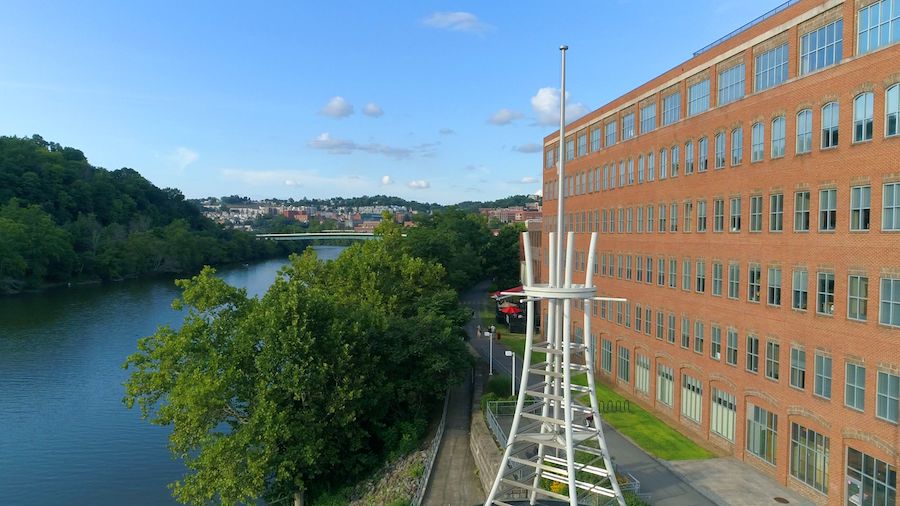
In the city, shops that cater to trail users have sprung up along the route, and trailside restaurants provide alluring open-air seating that abuts the pathway. A study conducted by WVU and Rails-to-Trails Conservancy (RTC) in 2017 found that people using the Mon River Trail contribute an estimated $6 million annually to the Morgantown area as a result of tourism and direct spending along the trail. One business owner, Heather Cleary of Morgantown Running, echoed these sentiments, stating, “We feel like it’s a necessity to be located along the trail—our customers want that access.”
The potential for generating more revenue for the community is palpable now that the word is out on this under-the-radar gem. Ella Belling, executive director of the Mon River Trails Conservancy—the managing entity for the trail system—is already seeing a boost in trip-planning requests from out-of-state trail enthusiasts.
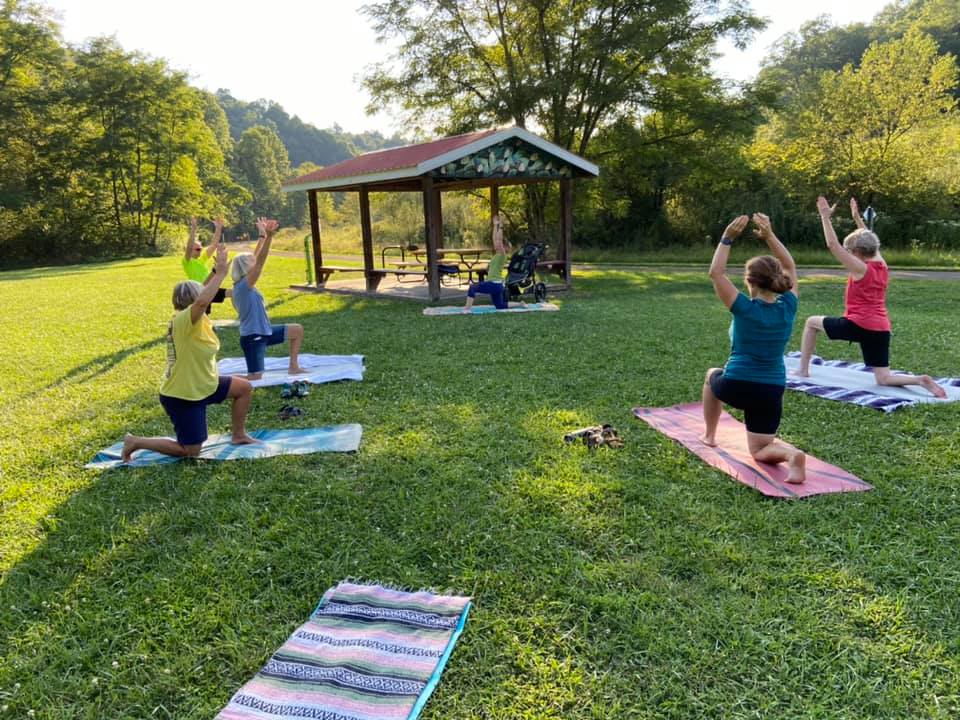
“West Virginia is a pretty special place, and we want to build upon the trails for economic development,” said State Delegate Evan Hansen. “It’s been very difficult to diversify our economy, which has been dependent on the coal industry for decades. We’re going through a shift, and outdoor recreation and tourism are a couple of natural things we can build upon because we have such great assets here.”
Beyond its economic value, the trail system has been woven into the social and cultural fabric of the community. As a shared public space, the trail system is used for more than 30 events each year, and the trails are integral parts of numerous health initiatives and activities, such as wellness walks and youth running and biking clubs. The trail also serves as an outdoor classroom for everyone from elementary schoolchildren to university students to adults attending birding walks and watershed education talks. This widespread appeal has led to political support from both sides of the aisle.
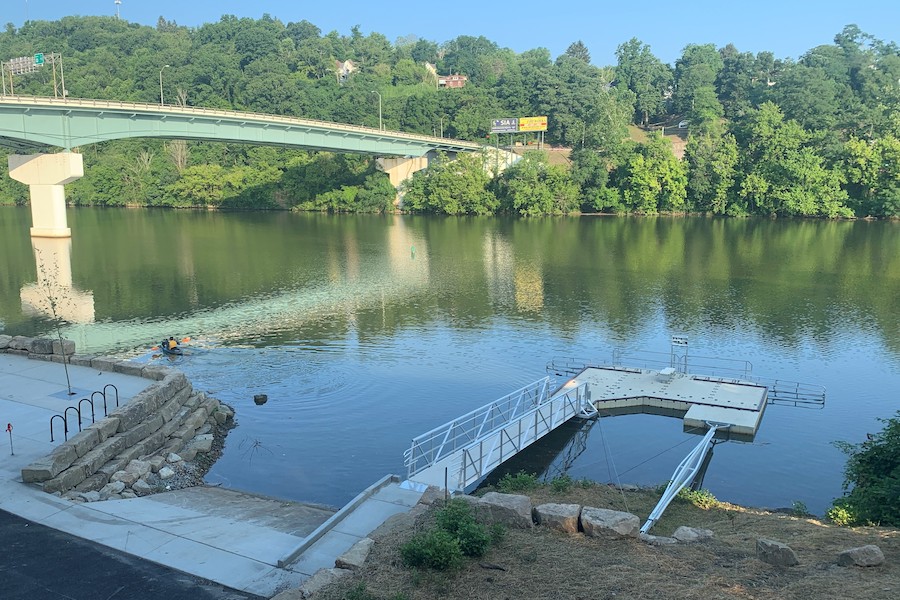
“From every single local politician that I know—from the county commission to the city council of the communities that the trail goes through—there’s pretty much uniform approval of it,” said Selin. “It’s considered very important and very basic. Because it goes by so many different neighborhoods and schools and parks, it’s just how people get outside.”
With all the positive impacts that the trail system has had since its initial construction in 1998, it may be hard to imagine now what the corridor used to look like, but it’s something that Fleischauer vividly recalls. “It was really trashy, and there were a bunch of old warehouses—it was ugly,” she recalls. “With the trail system, the whole outward look of the community has been cleaned up. Those were places that people just didn’t even think of going; now, they’re places that people want to go.”
Morgantown City Councilmember Bill Kawecki, who’s lived in in the city for nearly 50 years, agrees. “I remember when the riverfront was all industrial. I was in favor of turning it into a community asset, and I believe it’s become that. The trail is an attraction and a welcome change from a deteriorating and abandoned landscape.”
The Mon River Rail-Trail System has also helped to usher in positive changes for the waterways it parallels.
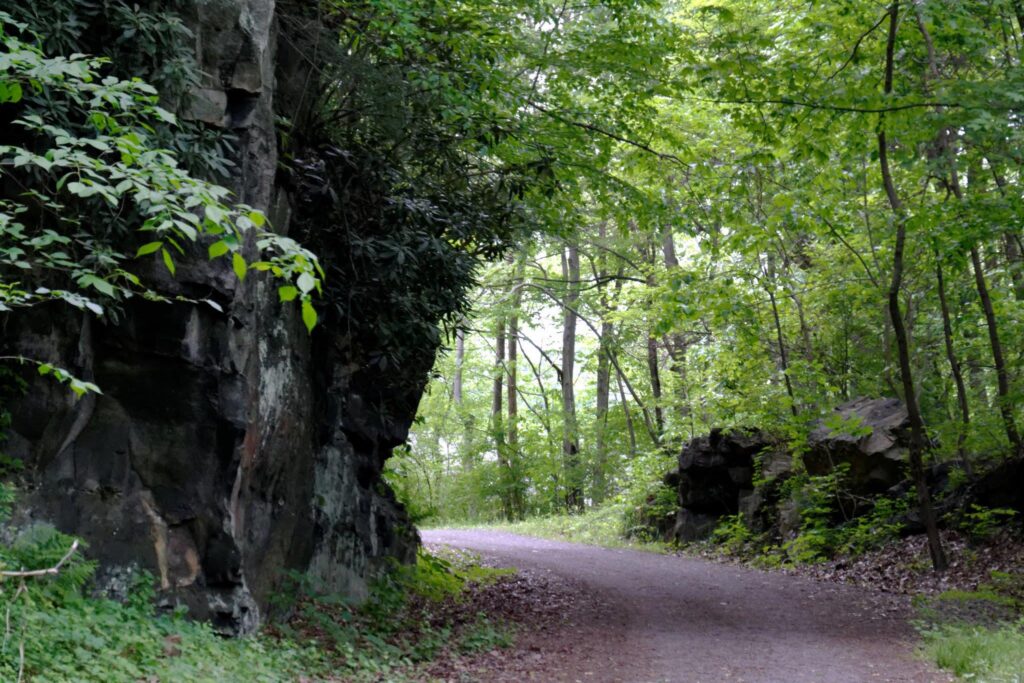
“The rail-trail goes right up alongside Deckers Creek and really opened up access to that,” said Hansen, who is also the past president of the Friends of Deckers Creek, a local watershed association. “The creek was significantly polluted by acid drainage from old coal mines, but the group has been so successful in cleaning out that pollution that they now stock trout in Deckers Creek. With the trail, people appreciate the creek and see that it has become more than just this industrial area that no one goes to; that helps build support for watershed restoration efforts. People can now hop on their bike with their fishing pole!”
Anglers and other water-sports lovers are also flocking to the Mon River, a designated “water trail.” Kayak launches and storage areas for nonmotorized boats are being added along the rail-trail to increase the connection to and enjoyment of this picturesque river flowing north to Pittsburgh.
On the Path to Success
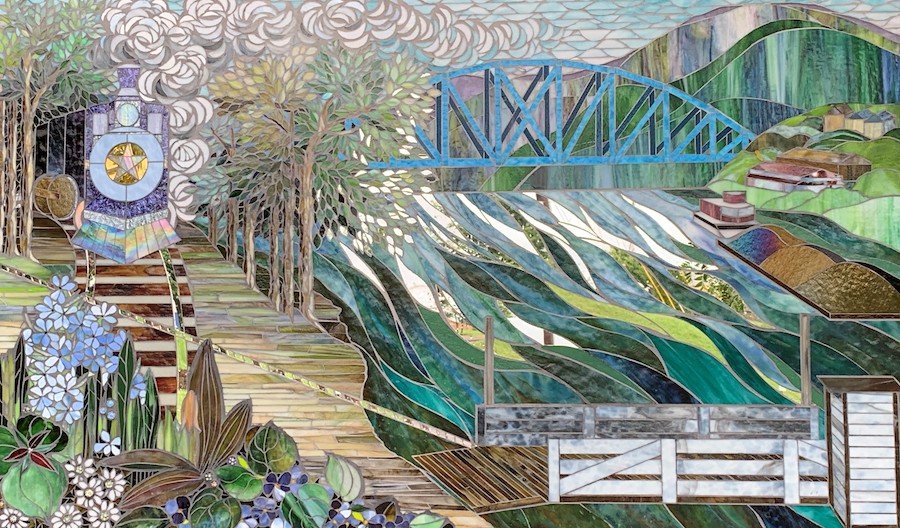
After nearly three decades of work, trail planners and advocates are not resting on their laurels. Surface upgrades are underway for the mature trail system, bike fix-it stations are being installed at trailheads, trailside public art is springing up, and new lighting infrastructure is in the works to further enhance the trail experience and increase its utility.
“There’s been an increase of amenities,” Belling affirmed. “With many of our trailheads, you’re seeing them transform in phased what-else-can-we-do ideas.”
New spurs extending into the surrounding neighborhoods—with a special emphasis on equitable access for low-income communities in the recently adopted bike and pedestrian transportation plan of the Morgantown Monongalia Metropolitan Planning Organization—are also helping to ensure that everyone can benefit from this transformative local and regional public resource.
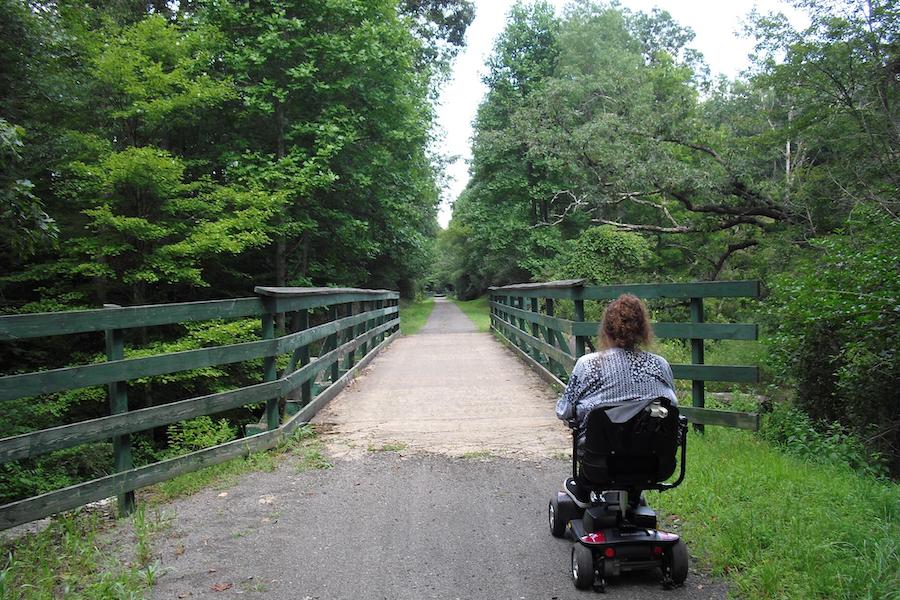
“It’s a three-county trail system, and it goes into very rural communities as well as Morgantown and our urban areas,” explained Belling. “It’s a good asset in every community, allowing for better commuting and free access to recreation. Right now, the Morgantown city council is working hard to develop neighborhood connections. Creating more access areas to the downtown and into our city parks and our neighborhoods has been a great next step and extension of our trails here.”
Efforts for increased access extend beyond local boundaries, too. At the state line, the Mon River Trail connects to Pennsylvania’s developing 34-mile Sheepskin Rail-Trail, which in turn links to the famed Great Allegheny Passage (gaptrail.org), spanning 150 miles between Pittsburgh and Cumberland, Maryland.
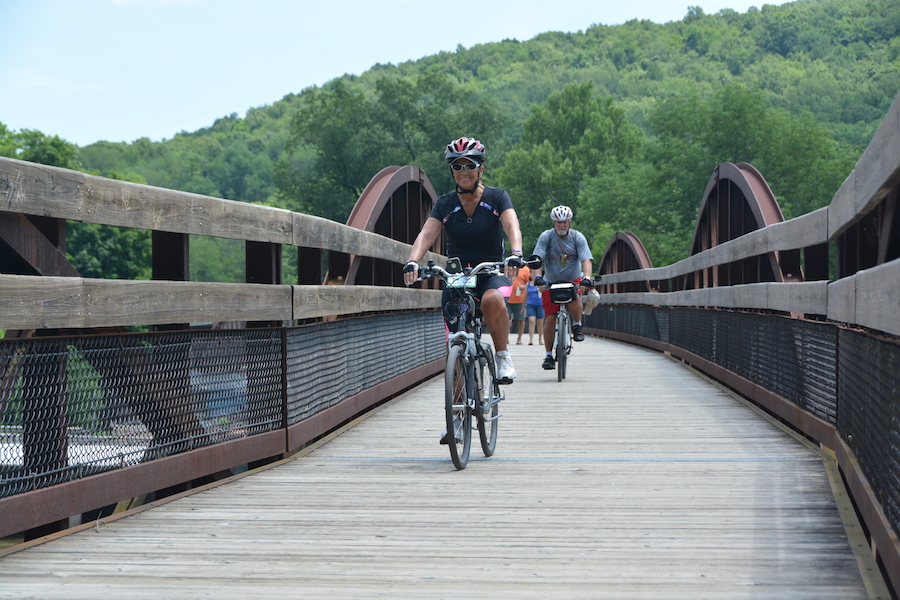
“It’s one of our busiest sections, and it’s been a wonderful thing to hook up to a new trail town, which is Point Marion, Pennsylvania,” said Belling of the recently developed connector. “My next hope is to find funding to work on a gateway entrance at the state line. It’s out in the middle of the woods, so it would be nice to mark the spot.”
The Mon River Rail-Trails, the Sheepskin and the GAP are all part of the Parkersburg to Pittsburgh (P2P) corridor project, a developing 238-mile route connecting northern West Virginia and Southwestern Pennsylvania by trail, which would be a gamechanger for the dozens of rural Appalachian towns along the way. Already nearly 80% complete, a recent study by RTC found that filling in just a few short gaps in the P2P—a realistic possibility within the next decade—could unlock the potential of this powerhouse corridor.
Related: Connecting Parkersburg to Pittsburgh by Rail-Trail
As ambitious as that project sounds, it’s nestled within another even bigger vision being carried out by the Industrial Heartland Trails Coalition: the creation of a 1,500-miles-plus multiuse trail network across four states: West Virginia, Pennsylvania, Ohio and New York.
Speaking from a lifetime of challenging but rewarding trail work, Belling has sage advice for others diving into these types of regional and collaborative projects: “Trail building is a lesson in patience and perseverance. Don’t give up on the dream.”
Related Links
- Mon River Trails Conservancy
- Morgantown Monongalia Metropolitan Planning Organization
- Industrial Heartland Trails Coalition
- Morgantown Area Paddlers
Trail Facts
Name: The Mon River Rail-Trail System comprises the Mon River Trail, Caperton Trail and Deckers Creek Trail.
Used railroad corridor: Fairmont, Morgantown and Pittsburgh Branch of the Baltimore and Ohio Railroad; as well as the Morgantown and Kingwood Railroad
Trail website: Mon River Trails ConservancyLength: 48 miles
Counties: Marion, Monongalia and Preston
Start point/end point: The Mon River Trail begins at the Pennsylvania state line, just south of Point Marion, and runs to Star City, where it connects to the Caperton Trail, which extends through Morgantown. The Mon River Trail continues on the southern end of Morgantown and ends at Prickett’s Fort State Park just outside of Fairmont. The Deckers Creek Trail can be picked up from the Caperton Trail and heads southeast to Reedsville.
Surface type: The 6-mile Caperton Trail is paved with asphalt. The first 2.5 miles of the Deckers Creek Trail in Morgantown is paved, with the remaining 17 miles surfaced in compacted limestone. The Mon River Trail is also compacted limestone.
Grade: The Mon River Trail and Caperton Trail are both relatively flat and easy. The Deckers Creek Trail offers more challenging terrain with some steeper climbs.
Uses: The trail system is wheelchair accessible and available for walking, biking and cross-country skiing. The paved sections also offer inline skating opportunities. Additionally, the adjacent Mon River offers an option for fishing and serves as a water trail for kayaking, canoeing and paddle boarding. Deckers Creek is also stocked with trout for fishing.
Getting there: The trail is accessible by the Morgantown Municipal Airport (100 Hart Field Road), though the larger Pittsburgh International Airport (1000 Airport Blvd.) is just over an hour away.
Access and parking: There are several parks and trailheads offering parking throughout the trail system, including the locations listed below from north to south.
Mon River Trail and Caperton Trail:
- Van Voorhis Trailhead (Van Voorhis Road and Boston Street, Star City)
- Edith Barill Riverfront Park (Leeway Street, Star City)
- Hazel Ruby McQuain Riverfront Park (185 Garrett St., Morgantown)
- Mountaineer Heritage Park (Don Knotts Boulevard, Morgantown)
- Uffington Trailhead (Round Bottom Road, off Route 73, Morgantown)
- Prickett’s Fort State Park (88 State Park Road, Fairmont)
Deckers Creek Trail:
- Marilla Park (E. Brockway Avenue, Morgantown)
- Breakiron Road Trailhead (Breakiron Road, off Route 7, Morgantown)
- Masontown Trailhead (Sand Bank Road, just west of Bridgeway Street, Masontown)
- Reedsville Trailhead (Route 92, Reedsville)
To navigate the area with an interactive GIS map, and to see more photos, user reviews and ratings, plus loads of other trip-planning information, visit TrailLink.com, RTC’s free trail-finder website.
Rentals: In Morgantown, Wamsley Cycles (709 Beechurst Ave., Suite 3; 304.296.2447) offers hybrid comfort bikes, tandems and child trailers for rent. Bike rentals are also available at the southern end of the trail in Pricketts Fort State Park (88 State Park Road, Fairmont; 304.363.3030) from April through October.

Donate
Everyone deserves access to safe ways to walk, bike, and be active outdoors.



